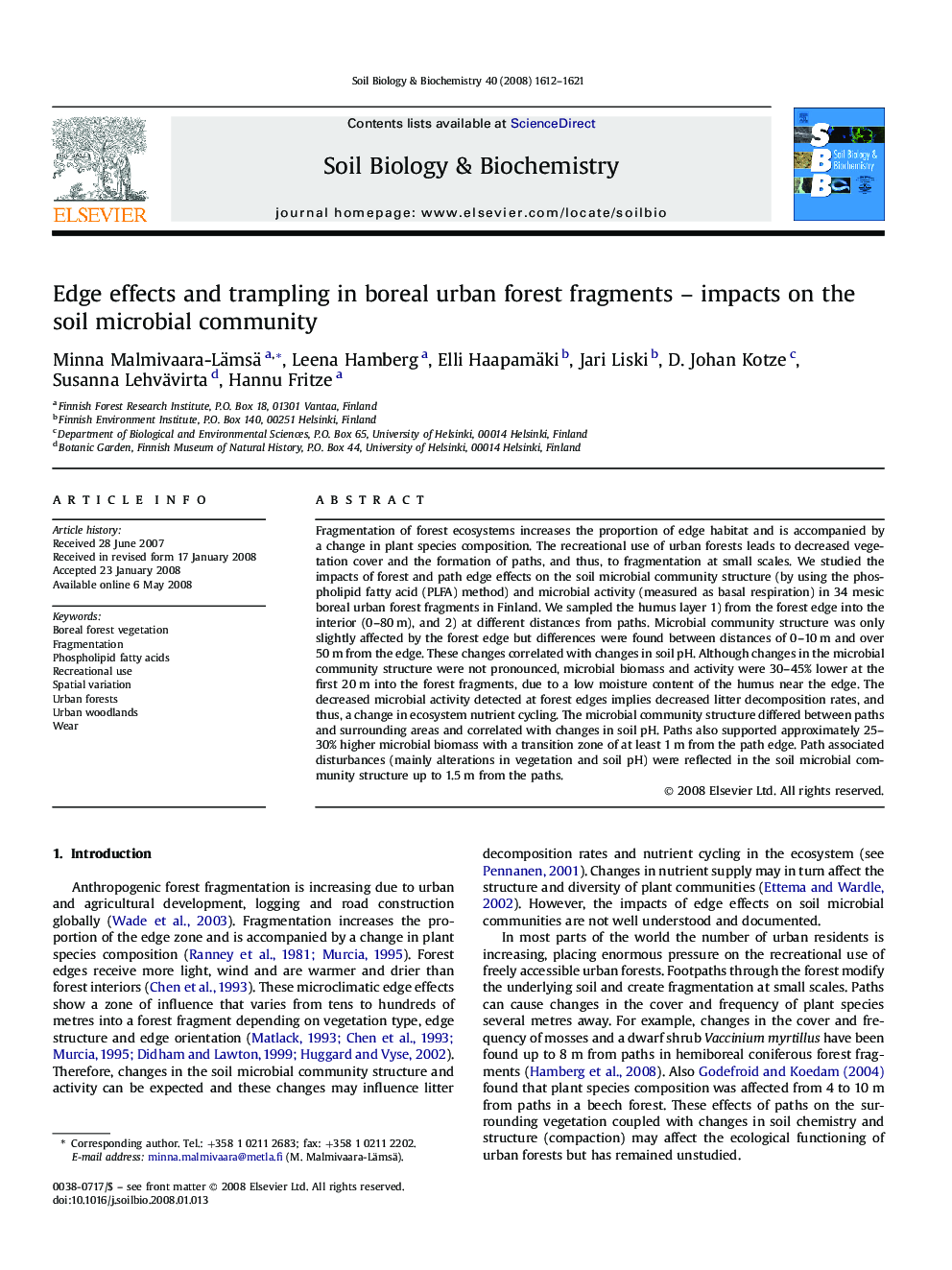| Article ID | Journal | Published Year | Pages | File Type |
|---|---|---|---|---|
| 2025812 | Soil Biology and Biochemistry | 2008 | 10 Pages |
Abstract
Fragmentation of forest ecosystems increases the proportion of edge habitat and is accompanied by a change in plant species composition. The recreational use of urban forests leads to decreased vegetation cover and the formation of paths, and thus, to fragmentation at small scales. We studied the impacts of forest and path edge effects on the soil microbial community structure (by using the phospholipid fatty acid (PLFA) method) and microbial activity (measured as basal respiration) in 34 mesic boreal urban forest fragments in Finland. We sampled the humus layer 1) from the forest edge into the interior (0-80Â m), and 2) at different distances from paths. Microbial community structure was only slightly affected by the forest edge but differences were found between distances of 0-10Â m and over 50Â m from the edge. These changes correlated with changes in soil pH. Although changes in the microbial community structure were not pronounced, microbial biomass and activity were 30-45% lower at the first 20Â m into the forest fragments, due to a low moisture content of the humus near the edge. The decreased microbial activity detected at forest edges implies decreased litter decomposition rates, and thus, a change in ecosystem nutrient cycling. The microbial community structure differed between paths and surrounding areas and correlated with changes in soil pH. Paths also supported approximately 25-30% higher microbial biomass with a transition zone of at least 1Â m from the path edge. Path associated disturbances (mainly alterations in vegetation and soil pH) were reflected in the soil microbial community structure up to 1.5Â m from the paths.
Keywords
Related Topics
Life Sciences
Agricultural and Biological Sciences
Soil Science
Authors
Minna Malmivaara-Lämsä, Leena Hamberg, Elli Haapamäki, Jari Liski, D. Johan Kotze, Susanna Lehvävirta, Hannu Fritze,
